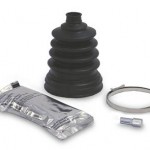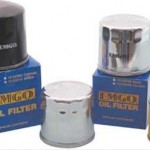No matter how often you drive your side by side, there will inevitably come a day that calls for a simple, but thorough tune up.
Many tuning tips are universal to all types of vehicles. And the following list is no different. But if power, performance, durability and fuel economy mean anything to you, it’s imperative that you keep your machine running the best it possibly can.
To accomplish that, using these basic maintenance and tune-up guidelines will be a pretty good start.
Change the Fuel Filter (If you Dare!)
If you’re accustomed to riding and wrenching on quads, finding the fuel filter on your side by side can be tricky. That’s because in fuel-injected vehicles like the Polaris RZR, the filter is actually located inside the gas tank on the pick-up tube and isn’t easily replaceable like on your typical ATVs. This not-so-user-friendly design will require you to replace the tank and pump assembly, or cut your fuel line and add an aftermarket fuel filter yourself. Weeeeeeeeee.
Check your Spark Plug
The vast majority of the time, there will only be one. In the event you have two, just double the instructions!
A healthy spark is critical to getting the proper air-fuel mixture your UTV requires to run optimally.
Before you unscrew your spark plug, be very careful to clean and remove any debris that might fall through the hole once you remove the plug. Any dirt or sand that might sneak into your motor from there can put your vehicle in a world of hurt. Please be careful.
Spark plugs are inexpensive. If there’s any doubt about your current plug’s health, just replace it. It will be very important to consult your owner’s manual, local shop, or the Web for the appropriate gap distance between the center and ground electrodes, depending on what side by side you own and which spark plugs you are using.
We recommend screwing in your spark plugs by hand. Only a very gentle half turn with a wrench will be required to secure the spark plug into place.
Check the Spark Plug Wires
If you’re checking your spark plugs, be sure to check your wiring. Simply inspect for any cracks or wire breaks. And if you see any, replace your cap and wire.
 Check the CV Boots for Holes or Cracks
Check the CV Boots for Holes or Cracks
If you’re spending a lot of time running in rough terrain, and your side by side doesn’t have any skid plates or A-arm guards, sooner or later something is going to puncture your CV boots.
Holes in the CV boots can lead to all of the grease getting thrown out, a bunch of water being let in, and ultimately a rusted, worthless ball bearing.
So, check for any holes or damage of any kind. If you feel compelled to change your CV boots and are not quite sure how, watch this excellent three-minute video showing you exactly how to replace those boots.
Check your Air Filter
A clean air filter sends clean air to your engine, giving you more power, throttle response, and better fuel economy. It is one of the simplest and least-expensive ways to keep your side by side operating at its peak. Take the time to look at it, clean it when needed, and replace it as necessary.
 Change your Oil and Oil Filter
Change your Oil and Oil Filter
If you’re not having your local shop do the work for you, don’t forget to run your engine for three or four minutes before beginning the oil-change process.
If you’re changing the oil filter, don’t forget to lubricate the new filter’s gasket with oil before attaching your new filter to the mounting surface.
Check your Sealing Surfaces
Always be on the lookout for leaking oil, as it could be a telltale sign of worn gaskets or bad valve covers. Making this a regular part of your pre-ride inspections could save you some downtime in the middle of the wilderness someday, where you might get eaten by a bear, pretty much ruining the entire trip.
Keep your side by side tuned, and reap the benefits each and every time you ride for many years to come.

Comments